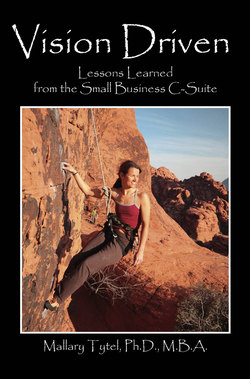Читать книгу Vision Driven: Lessons Learned from the Small Business C-Suite - Mallary JD Tytel - Страница 7
На сайте Литреса книга снята с продажи.
Understanding Your Organization
Оглавление“Understand the culture to understand the organization.”
Edgar Schein
We all live and work in a complex world made up of complex systems. Everyday we and those around us choose to act in certain ways, and our behavior creates recognizable patterns. These patterns – emerging from the actions, connections and relationships that have meaning across space and time – create culture.
In defining culture, we say that it is the personality of a community, organization or group. It is comprised of the assumptions, values, norms and artifacts of its members and their behaviors. At times culture may be difficult to express, but everyone knows it when they see it and sense it. You can tell the culture of an organization by looking at how the furniture is arranged, what folks brag about, how people are dressed and the rituals that are maintained.
Culture is learned and it provides a reinforcing template shaping what we do and how we think. With this in mind, we have a responsibility to examine and question these templates, keeping an eye out for three potential traps. These are: “isms,” Social Construction and Cultural Programming. All can color our assumptions and alter our perceptions.
We look around and see isms wherever we go. They are doctrine, ideology or theories that categorize individuals and groups. Isms are based upon human qualities that are often different from our own and outside the groups to which we belong; they are, however, present in others. Isms such as racism, ageism or any otherism are sustained by inference, belief, bias, generalizations, habit, ignorance, simplification, stereotypes and tradition. Isms often create particular, unrealistic or negative expectations. For example, when Carol went car shopping, her brother, Teddy, tagged along. The salesman was told Carol was the buyer, but kept addressing himself to Teddy, even to the point of asking, “What color car is she looking for?”
Social construction creates a standard or defines a principle believed to be fact that has been developed or “constructed” through social practice. This truth appears to be natural, or the way things are, but can, in fact, be based simply upon history, repetition or habit. For example, a woman is not (educated, intelligent, strong, agile, tough) enough to be a (commander, cardiac surgeon, electrician, financial analyst, CEO).
Finally, there is cultural programming. Because of what we “know,” either implicitly or explicitly, we do not just observe a behavior, event or situation; we also attach meaning to it and then act based upon that meaning. Our interpretation of an action or interaction therefore includes an evaluative or judgmental component. The danger lies in the potential for misinterpretation. For example, you are from a different part of the country than I. The first time we meet, I make a rash of judgments about you based exclusively on where you were born and your accent.
Notwithstanding these hazards, there is good news here. Complex adaptive systems are collections of individuals who act in a variety of predictable and unpredictable ways and whose actions are interconnected. We are all members of these organizations, communities and other systems. Our actions create the potential to make a difference and with each and every movement, we can transform the system.
The tools we need are simple: looking inside ourselves for self-awareness and self-acknowledgement; conscious reflection that leads to action and resolve; and reaching out to others in cooperation and collaboration. Those, in combination with respect, fairness and balance, will allow us to act. That is, to do our jobs – to facilitate, motivate, negotiate, initiate, communicate, mitigate, innovate, and lead – and to do it well.
The Nature of Complex Adaptive Systems
Remember, we have the power to influence the systems of which we are part – and alter the culture.
What is the culture you would like to create in your organization?
